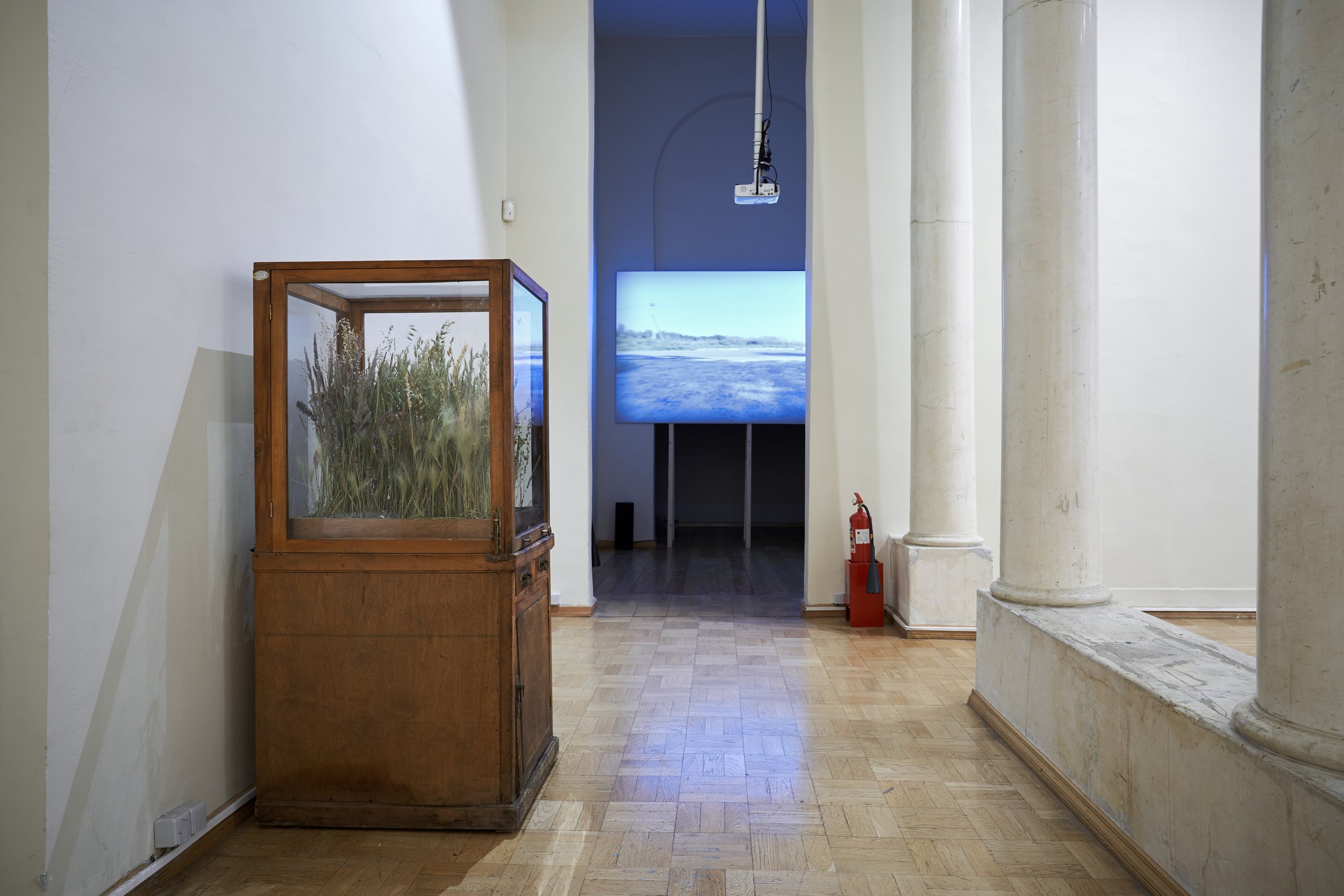Anselm Franke visits Alexandra Anikina
Introduction by Anselm Franke
Alexandra Anikina’s artistic practice is focused on exploring techno-cultural artefacts and the entry of digital culture into moving image practices. She has explored myriad pathways in her engagement with technology and ideology, such as what she termed “procedural films,” and films that introduce generative algorithms as engines for moving images. Her recent essay film Data Field (2021), completed during the fellowship and the first film of a trilogy, asks: “What does Google Maps see in the Soviet past?”
Data Field is a deeply personal, ritualistic and yet structural reflection on the Soviet past and the lingering present of its futurity. Soviet life, the narrator voice recounts, was characterized by a utopian consciousness that always existed in a gap between present reality and a projected social and techno-scientific future. Starting out from her rural family house, she draws a “cosmological pentagram,” cutting through “temporal vectors aimed at the past and the future,” from its garden and the field behind the village that played an important role during the Great War, in which the time of the village and the time of industrial modernity encountered each other, but whose readability is deeply in question when we now look at it through Google Earth. Death, and the dream of escaping or outsmarting death is invoked as haunting history and as cosmological invariant - as the ultimate boundary of the lifeworld, the edge from which all cosmological symbolisations spring: “the forest is connected with the dead, the garden with - the living."
Anikina moves swiftly between folkloristic myths, Lenin’s mausoleum, and the Russian cosmists’ dreams to overcome death and bring all ancestors back to life, towards real and imagined meteorites as alien invasions and apocalyptic fears and science fiction imaginaries, among them the story of aliens arriving from a universe where time move into the opposite direction, such that they perceive our universe like a film running backwards. Data Field’s “cosmological pentagram" circles around the question what kind of past is possible to read and reanimate technologically, and thus seems to ask: in what kind of gap do we exist today? How do we take measure of the temporality of dialectical materialism that has become unreadable? Our present, the film suggests, is that of the “catastrophic consciousness” of a late capitalism that now forecloses the futurity of alternative political projects through managerial ideologies of the feedback-based “data fields” that we inhabit only seemingly, on our computer screens. Thus the gap the film explores is the one between the total representational accessibility conjured by Google Earth, and our actual lifeworlds whose political contradictions are submerged in a data-driven image of wholeness, in which all cosmology returns to us inverted, as harbinger not of overcoming, but of supra-individual death.
Data Field
Put in the installation mode, Data Field conjures up a museum gaze through the use of the old vitrines. They were rescued from a Soviet factory where they apparently served to display the samples of newly produced scientific equipment. The displays contain the artefacts from the film: the old box containing a little piece of a meteorite, postcards, photographs and a reconstruction of a field.
Data Field, installation view at the Fifth Wave, Special Project of the 2nd Garage Triennial of Russian Contemporary Art, April 2021, Shchusev State Museum of Architecture. Photo: Egor Slizyak © Garage Museum of Contemporary Art
“Researching media landscapes and depictions of technology, I keep returning to Soviet sci-fi. What particular cosmotechnics stand behind the clash of the old, the new and the imaginary media in this film?” (Alex Anikina)
Still frames from Ivan Vasilyevich Changes Occupation (1973) by Leonid Gaidai; still frame from the recent Sberbank advertisement with the digital recreation of the deceased actor from this film.






